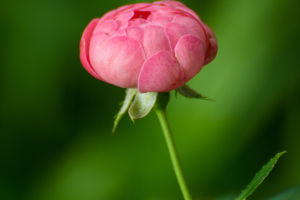Ancient Reproductive Secrets
Ferns are an ancient and diverse group of plants that have existed on Earth for hundreds of millions of years.
Despite their importance in plant taxonomy and their critical role in ecosystems, ferns' reproductive patterns and life cycles remain a mystery to many.
A common question is: Do ferns have seeds? The answer is no. This article will delve into the biology of ferns, specifically their reproduction methods and life cycles, to explain why ferns don't have seeds.
Basic Characteristics of Ferns
Ferns belong to a large group of vascular plants with unique structural and physiological characteristics. They often have complex leaves (called fronds) that sometimes look like feathers, hence their name. The rhizomes of ferns are usually underground stems from which roots and leaves grow.
One of the distinctive features of ferns is that their leaves curl into rings before unfolding, a state known as "circinate vernation." Ferns exchange gases through stomata and have vascular tissue (xylem and phloem) to transport water and nutrients.
Life Cycle of Ferns
The life cycle of ferns is divided into two main stages: the sporophyte stage and the gametophyte stage. This life cycle is called the "alternation of generations," in which plants alternate between sporophyte and gametophyte generations.
1. Sporophyte Stage
This is the primary, visible stage of the fern. Sporophytes are diploid (containing pairs of chromosomes) and reproduce by spores. Tiny sporangia (often grouped into clusters called sori) can be seen on the undersurface or edges of fern leaves. These sporangia produce spores.
2. Gametophyte Stage
When the spores hit the ground, they germinate and grow into gametophytes. Gametophytes are haploid (containing only one set of chromosomes). Usually, heart-shaped, small green plant bodies are called prothallus.
The gametophyte bears reproductive organs: antheridia (producing sperm) and archegonia (producing egg cells).
When the environment is moist, the sperm swims to the egg cell and fertilizes it in the archegonium to form a zygote. The zygote subsequently matures into a new sporophyte, thus completing the life cycle.
How Ferns Reproduce
Ferns reproduce mainly by spores, not seeds. A spore is a single-cell propagule that usually has a thick wall to withstand harsh environments. Fern spores are spread by wind or water. After landing, the spores germinate in a suitable environment to form new gametophytes.
The Structure and Function of Spores
Spores are the critical reproductive unit of ferns. Each sporangium can produce thousands of spores germinating under suitable conditions to form new gametophytes. Spores are simple in structure but powerful in that they can survive for long periods and germinate rapidly under the right conditions.
The Role of Gametophytes
Gametophytes are an integral part of the fern life cycle. Although they are small and discreet, they are responsible for producing gametes. Through the water medium, the sperm swims to the egg cell for fertilization, and the development of a new sporophyte begins.
Why Ferns Lack Seeds
Despite the advantages of seeds, ferns rely on spores for reproduction. This strategy is related to their evolutionary history and ecological methods.
Ferns thrive in moist environments where the dispersal and germination of spores are not limited. They do not need the adaptations to dry or cold conditions that seed plants require.
Conclusion
Ferns do not have seeds and rely on spores for reproduction. This method, while different from that of seed plants, is highly effective in the ecological niches they occupy.
Understanding ferns' biology and ecological roles helps us appreciate these ancient plants and recognize their importance in maintaining environmental balance and supporting biodiversity.


